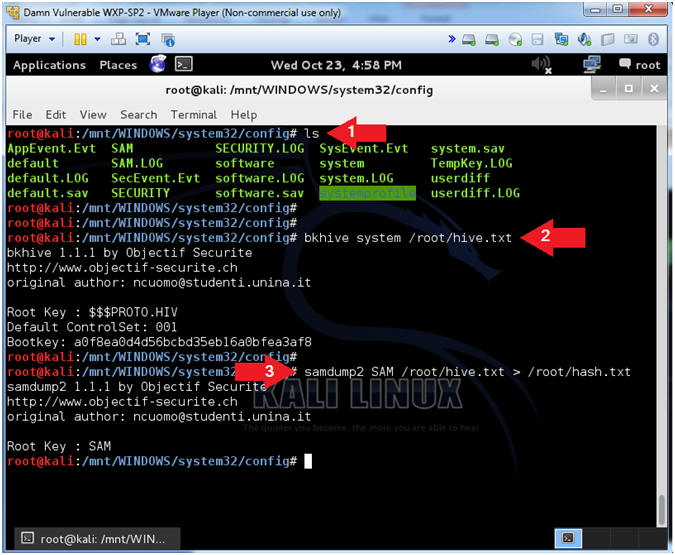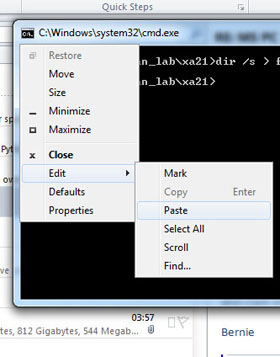

Addressing each folder separately is too time consuming. Sometimes there are hundreds of files in 10s of folders. After I get all the files listed, I move them to another folder.
LIST DIRECTORY CONTENTS WINDOWS 7 WINDOWS 7
But everyone seems to be looking for something in particular (specificįile names, dates files were created or modified), and although they seem to be having trouble with those features, too, (with the new Windows 7 search), I haven't seen anyone ask this question. I looked through help pages and read as many Search questions/answers as I could before posting this. I used this capability all the time in Windows XP. and this would open a window and I wouldn't put any criteria in the boxes, I would just click the Search button and this would listĪll the files and folders in the folder I had right-clicked on). In Windows XP I would use the search window (after selecting the desired folder I would right click on it and select Search. Recently, I had to send a friend a list of all the files and folders in a particular directory on my computer and it took me some time to figure out the best way to go about it. I don't want to specify any search criteria because I want to see I don't want to specify any search criteria, I want to seeĪll the files in a folder (and its subfolders). 1 Comment 1 Solution 552 Views Last Modified. This entry was posted in Windoze on Jby admin.In Windows 7 - I would like to list all the files in a folder including those in all its subfolders as a single sortable list. Not particularly graceful, but this is Windows were are dealing with here, so lets be realistic. Whenever you encounter the refresh bug, just run the shortcut and the problem will clear. Type the account name that you want to assign ownership to. Right-click on the folder, and then, choose 'Properties' on the menu. This is the explorer.exe process restarting. The steps to get the ownership of the file or folder are slightly different between Windows 10/8 and Windows 7. So, here are few methods to show folder size in Windows Explorer. The mentioned tools here ca work on Windows server, Windows 10, 7 & 8. When you do this, everything other than your wallpaper will disappear and then quickly re-appear. In such situations, one can use third-party disk space analyzer tools those not only show the folder size but also help in removing the duplicate files by analyzing the size of the folders. While holding down the Shift key, right-click on one of the selected files. Everything in the folder should now be selected. Using File Explorer, navigate to the folder whose contents you want to list. Next, right click on your desktop, and create a shortcut, and point this to c:\refresh.batĭouble click the shortcut to test it. Windows immediately opens a File Explorer window.
LIST DIRECTORY CONTENTS WINDOWS 7 PDF
Save this file as refresh.bat to the root of your C:\ drive, and save it as a pdf with as well Taskkill /f /fi "imagename eq explorer.exe" So, open Notepad, and copy and paste the following: The fix involves creating a batch script which uses taskkill to kill and restart this process, at which point the bug clears. The bug arises in a process called explorer.exe. From what I can see, those posters who have claimed a particular fix works don’t actually have the bug (which seems to be hardware/software specific) and have in fact fixed something else which is similar in behavior to the bug.Īnyway, the fix (its really a work around) given below, definitely works. a fix, some of which work and some of which do not. If you refer to the the link above, you will see various suggestions re. They’re much too busy going to the corporate gym and eating mango salad in their subsidized restaurants, as funded by the millions of mindless drones who buy their software, to worry about trivial items like bugs, etc. This bug has been in the Windows 7 OS since 2009!! No attempt has been made to fix it by Microsoft, presumably because they don’t really care if their OS actually works or not. This command lists all files and folders that are at the E:\music level. First, just list a specific folder: Get-ChildItem -Path E:\music. Its also intensely annoying from a UX point of view, as attested by the 41 pages of comments on the bug thread on . This cmdlet has been around since Windows PowerShell 1.0, but in more recent versions of Windows PowerShell, it has gained a couple of additional useful switches.

It doesn’t sound like a big deal, but what actually happens is that people get confused with what is going on and inadvertently delete files etc, which is obviously a bigger deal. I don’t often write posts about Windows, but I decided I would in this case, because the bug in question is a real soul destroyer, and it gives me a chance to have a good rant about the dogfood that Microsoft tries to pass off as software.īasically, if you alter/create/delete files or folders in Explorer windows, the window does not refresh to show the update.


 0 kommentar(er)
0 kommentar(er)
